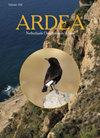西非蒙塔古鹞越冬生态研究:与年度环境条件变化有关的洄游
IF 1.3
4区 生物学
Q3 ORNITHOLOGY
引用次数: 0
摘要
在非洲越冬的古北极候鸟通常在整个冬天使用几个地点,这种策略被称为“巡回”。通过这种方式,移民追踪资源的时空变化。尽管这种策略对候鸟很重要,但我们仍然缺乏对环境条件变化如何影响地点使用和地点之间移动时间的详细了解。在2005年至2018年期间,我们使用卫星发射机和GPS跟踪器跟踪了西欧繁殖群中的125只成年蒙塔古鹞马戏团pygarus。总共获得了129个完整越冬季节的数据,其中包括33个被跟踪了两个或两个以上冬天的个体。蒙塔古鹞是流动的,平均使用3.3个越冬地点,它们在不同年份之间表现出很高的地点保真度。在到达它们的越冬范围后,鹞到达的第一个地点位于萨赫勒北部,以自然和稀疏的植被为主。随后的遗址位于萨赫勒南部,主要以农业和自然栖息地为主。与随机地点相比,鹞使用的地点具有更高的栖息地多样性。家园范围的大小和活动(每天飞行时间,每日距离)在鹞最后使用的地点(即它们开始春季迁徙的地点)达到峰值。对于在多个季节跟踪的个体,我们发现家园范围的大小不依赖于植被的绿化率。然而,在干旱的年份,鸟类在同一地点的日常飞行距离比更绿(潮湿)的年份更长。重要的是,在越冬地点之间移动的时间受到当地环境条件的影响,在干旱的年份,个体停留的时间较短,从第一个地点出发的时间较早,在绿色的年份,到达最后一个地点的时间较早。我们得出的结论是,在流动策略的背景下,蒙塔古的鹞在不同年份之间忠于他们使用的地点(空间成分),但在使用这些地点的时间(时间成分)上是灵活的,它们根据环境条件的年变化进行调整。本文章由计算机程序翻译,如有差异,请以英文原文为准。
On the Wintering Ecology of Montagu's Harriers in West Africa: Itinerancy in Relation to Varying Annual Environmental Conditions
Palearctic migrants wintering in Africa commonly use several sites throughout the winter, a strategy known as ‘itinerancy’. In this way, migrants track spatiotemporal variation in resources. Despite the importance of this strategy for migratory landbirds, we still lack detailed understanding of how variation in environmental conditions affects site use and the timing of movements between sites. We tracked 125 adult Montagu’s Harriers Circus pygargus from Western European breeding populations between 2005 and 2018 using satellite transmitters and GPS trackers. In total, data on 129 complete wintering seasons were obtained, including 33 individuals that were followed in two or more winters. Montagu’s Harriers were itinerant, using on average 3.3 wintering sites, to which they showed high site fidelity between years. The first sites harriers used after arriving in their wintering range were situated in the northern Sahel and were dominated by natural and sparse vegetation. Subsequent sites, situated further south in the Sahel, were mainly dominated by agricultural and natural habitats. Sites used by harriers had higher habitat diversity compared to random sites. Home range size and activity (time flying per day, daily distance) peaked at the last sites harriers used (i.e. the site from which they commenced spring migration). For individuals tracked in multiple seasons, we showed that home range size did not depend on vegetation greenness. However, the birds covered longer daily distances at the same site in drier years compared to greener (wetter) years. Importantly, the timing of the movements between wintering sites was affected by local environmental conditions, with individuals staying for shorter durations and departing earlier from first sites in drier years and arriving earlier at last sites in greener years. We conclude that within the context of a strategy of itinerancy, Montagu’s Harriers are faithful to the sites they use between years (spatial component), but flexible in the timing of use of these sites (temporal component), which they adjust to annual variation in environmental conditions.
求助全文
通过发布文献求助,成功后即可免费获取论文全文。
去求助
来源期刊

Ardea
生物-鸟类学
CiteScore
2.10
自引率
0.00%
发文量
49
审稿时长
>12 weeks
期刊介绍:
Ardea is the scientific journal of the Netherlands Ornithologists'' Union, and is published since 1912. The journal welcomes manuscripts reporting significant new findings in ornithology, in particular those covering the ecology, life history, and evolution of birds, and including sound descriptive work. Ardea publishes Original research papers, Short notes and Book reviews. In addition to the regular three issues per year, Ardea publishes specials that contain conference or workshop proceedings (produced on request).
 求助内容:
求助内容: 应助结果提醒方式:
应助结果提醒方式:


